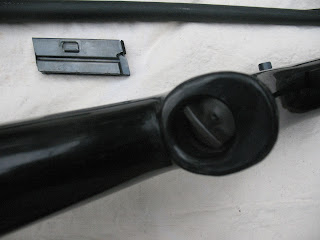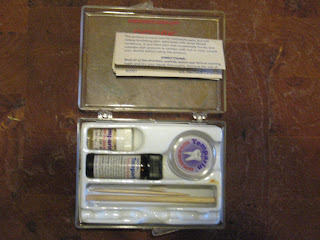Many people buy pistols for self defense but few people
really know how to shoot a pistol with any kind of accuracy. The relatively short barrel and the short
sight plane make a pistol more difficult to fire accurately than a long
gun. Learning to fire a pistol
accurately is basically the same as learning any other physical skill; it takes
time, practice, and a methodical approach.
I suggest that you learn to shoot a pistol with a .22
caliber revolver. There are several
reasons for this:
1. The ammo is cheap
2. The recoil is light, so you won’t be as likely to develop
a “flinch”
3. A revolver allows
you to load chambers in a random pattern leaving some of them without a
cartridge (the reason for this will be explained in a moment)
You will need to use the same size target and shoot from the
same distance at every practice session when you are first learning to shoot,
so buy or print a pile of targets. You
will also need to record each and every shot that you make, so I recommend that
you buy a small notebook and print off a bunch of miniature targets that look
like the one that you will be shooting at.
Cut the small targets out and glue them into your notebook, and you will
be ready to go to the range. Be sure and
take hearing protection, a pair of binoculars or a spotting scope, and if you
want to make your targets last longer take a roll of masking tape and a black
marker with you. This way after you fire
ten or twelve rounds at your target you can tape over the holes. If you hit the bull, you can use the black
marker to color the tape black.
At the range you want to set up your target in a safe
shooting location, then pace off twenty-five yards and draw a shooting line on
the ground. I like to set up a small
table to hold my ammo, binoculars, notebook, tape, etc.
The first time that you shoot, you want to do something that
is a little unusual but is very effective for teaching proper trigger pull, and
this is why I recommend that you use a revolver. If your revolver holds six rounds, load it
with four rounds in a random pattern. If
your revolver holds nine rounds like mine, then load it with six rounds. Don’t leave the empty chambers right next to
each other, space them randomly around the cylinder. Now spin the cylinder, and without looking at
it, close the cylinder. Now when you
thumb the hammer back, you don’t know if it will be falling on a live round or
an empty chamber.
When learning to shoot you always want to fire single
action, so step up to the line and assume a good shooting stance. Your feet should be about shoulder width
apart facing straight ahead. Your hips
and shoulders should be square to the target.
If you are right handed your left foot should be about 14 to 18 inches
in front of your right foot, depending on how tall you are. Hold the gun with both hands. The right hand should be wrapped around the
grips with the index finger extended.
The left hand should cup under the butt and come up onto the left side
of the grips. Arms should be relaxed and
bent slightly at the elbows.
When you are comfortable with your stance, thumb the hammer
back and place the first digit of your right index finger on the trigger. Sight down the barrel so that the top of the
front sight fills the slot in the back sight with the top of the front blade
dead even with the top of the wings on the rear sight. The center of the bull should be sitting
right on top of the front sight.
Now draw in a breath, exhale half of it, and relax. Keeping the gun on target squeeze the
trigger slowly. If you are squeezing the trigger properly you
should not know exactly when it is going to fall. It should be a complete surprise to you. This is the hardest thing for most people to
learn, and this is where the empty chambers in your cylinder will really help
you in developing the correct trigger pull.
When you squeeze the trigger the hammer may fall on an empty
chamber. If the happens, take note of
your reaction. Did you jerk when the
hammer snapped down? If you did it means
that you knew when the hammer was going to fall, and you jerked in anticipation
of the discharge. If you are squeezing
the trigger properly, you should not know the exact moment when the hammer will
fall, and so you can’t anticipate the discharge and you won’t flinch. You should use this method of leaving random
chambers empty until you never flinch.
You’ll be surprised at how quickly you will overcome flinching, and you
will be amazed at the difference it makes in the accuracy of your shooting.
Each time you discharge a round you should stop, lay your
pistol down, look at the target through your binoculars, and mark the target in
your notebook at the exact spot the round hit on your target. Then pick up the pistol and fire another
round. This is very time consuming, but
it will make you pause and consider each shot and what you might have done
wrong. In no time at all you will start
shooting tighter and tighter groups, even if you don’t know exactly what
corrections you are making. Don’t ask me
how it works. Maybe a brain researcher
can explain it. I just know that it does
work.
Please don’t get in a hurry.
When I was learning to shoot, I made it a point not to shoot more than a
hundred rounds per practice session.
Slow and steady wins the race.
Just be patient, be methodical, and keep practicing. The results will be well worth the effort.







































